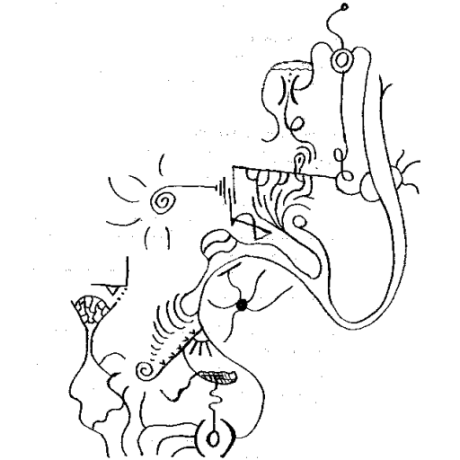
music-player-core
Music player core Python module
BSD-2-CLAUSE License
==========================
Music player Python module
This Python module provides a high-level core Music player interface where you are supposed to provide all the remaining high-level logic like the user interface, the playlist logic and the audio data.
Example
A very simple player with gapless playback:
.. code-block:: python
import musicplayer, sys, os, fnmatch, random, pprint, Tkinter
class Song:
def __init__(self, fn):
self.url = fn
self.f = open(fn)
# `__eq__` is used for the peek stream management
def __eq__(self, other):
return self.url == other.url
# this is used by the player as the data interface
def readPacket(self, bufSize):
return self.f.read(bufSize)
def seekRaw(self, offset, whence):
r = self.f.seek(offset, whence)
return self.f.tell()
files = []
def getFiles(path):
for f in sorted(os.listdir(path), key=lambda k: random.random()):
f = os.path.join(path, f)
if os.path.isdir(f): getFiles(f) # recurse
if len(files) > 1000: break # break if we have enough
if fnmatch.fnmatch(f, '*.mp3'): files.append(f)
getFiles(os.path.expanduser("~/Music"))
random.shuffle(files) # shuffle some more
i = 0
def songs():
global i, files
while True:
yield Song(files[i])
i += 1
if i >= len(files): i = 0
def peekSongs(n):
nexti = i + 1
if nexti >= len(files): nexti = 0
return map(Song, (files[nexti:] + files[:nexti])[:n])
# Create our Music Player.
player = musicplayer.createPlayer()
player.outSamplerate = 96000 # support high quality :)
player.queue = songs()
player.peekQueue = peekSongs
# Setup a simple GUI.
window = Tkinter.Tk()
window.title("Music Player")
songLabel = Tkinter.StringVar()
def onSongChange(**kwargs): songLabel.set(pprint.pformat(player.curSongMetadata))
def cmdPlayPause(*args): player.playing = not player.playing
def cmdNext(*args): player.nextSong()
Tkinter.Label(window, textvariable=songLabel).pack()
Tkinter.Button(window, text="Play/Pause", command=cmdPlayPause).pack()
Tkinter.Button(window, text="Next", command=cmdNext).pack()
player.onSongChange = onSongChange
player.playing = True # start playing
window.mainloop()
Description
It provides a player object which represents the player. It needs a generator player.queue which yields Song objects which provide a way to read file data and seek in the file. See the source code for further detailed reference.
It has the following functionality:
-
open source (simplified BSD license, see
License.txt <https://github.com/albertz/music-player-core/blob/master/License.txt>_) -
very simple interface
-
support of most important sound formats (MP3, Flac, Ogg Vorbis, WMA, AAC / ALAC m4a, ...)
-
Plays audio data via the player object. Uses
FFmpeg <http://ffmpeg.org/>_ for decoding andPortAudio <http://www.portaudio.com/>_ for playing. -
Of course, the decoding and playback is done in seperate threads. You can read about that
here <http://sourceforge.net/p/az-music-player/blog/2014/01/improving-the-audio-callback-removing-audio-glitches/>_. -
Supports any sample rate via
player.outSamplerate. The preferred sound device is set viaplayer.preferredSoundDevice. Get a list of all sound devices viagetSoundDevices(). -
Can modify the volume via
player.volumeand alsosong.gain(see source code for details). -
Prevents clipping via a smooth limiting functions which still leaves most sounds unaffected and keeps the dynamic range (see
smoothClip). -
ReplayGain <http://www.replaygain.org/>_ (for audio volume normalization) (seepyCalcReplayGain). This is as far as I know the only other implementation of ReplayGain despite the original frommp3gain <http://mp3gain.sourceforge.net/>_ (gain_analysis.c <http://mp3gain.cvs.sourceforge.net/viewvc/mp3gain/mp3gain/gain_analysis.c?view=markup>_). -
AcoustId <http://acoustid.org/>_ audio fingerprint (seepyCalcAcoustIdFingerprint). This one is also used byMusicBrainz <http://musicbrainz.org/>. It uses theChromaprint <http://acoustid.org/chromaprint>lib for implementation. -
Provides a simple way to access the song metadata.
-
Provides a way to calculate a visual thumbnail for a song which shows the amplitude and the spectral centroid of the frequencies per time (see
pyCalcBitmapThumbnail). Inspired bythis project <https://github.com/endolith/freesound-thumbnailer/>_. -
Gapless playback <http://en.wikipedia.org/wiki/Gapless_playback>_
Usages
The main usage is probably in the MusicPlayer project <http://albertz.github.io/music-player/>_ - a full featured high-quality music player.
Installation
To get the source working, you need these requirements:
- boost >=1.55.0
- ffmpeg >= 2.0 (including libswresample)
- portaudio >=v19
- chromaprint
Debian/Ubuntu +++++++++++++
::
apt-get install python-dev libsnappy-dev libtool yasm libchromaprint-dev portaudio19-dev libboost-dev
FFmpeg:
apt-get install libavformat-dev libavresample-dev
If your FFmpeg in Debian/Ubuntu is too old (lacks libswresample), do::
add-apt-repository ppa:jon-severinsson/ffmpeg
apt-get update
apt-get install libavformat-dev libswresample-dev
or install it from source.
MacOSX ++++++
::
brew install boost
brew install portaudio
brew install ffmpeg
brew install chromaprint
Other notes +++++++++++
Chromaprint <http://acoustid.org/chromaprint>_ depends on FFmpeg, so if you have a custom FFmpeg install, you might also want to install that manually. ./configure && make && sudo make install should work for FFmpeg and PortAudio. You might also want to use --enable-shared for FFmpeg. cmake . && sudo make install for Chromaprint.)
Building ++++++++
Then call python setup.py build or ./compile.py to build the Python modules (it will build the Python module musicplayer.so).
The module is also registered on PyPI <https://pypi.python.org/pypi/musicplayer>_, so you can also install via::
pip install musicplayer
.. image:: https://travis-ci.org/albertz/music-player-core.png :target: https://travis-ci.org/albertz/music-player-core
Similar projects
-
Overview in Python Wiki:
Audio modules <https://wiki.python.org/moin/Audio>_ andMusic software <https://wiki.python.org/moin/PythonInMusic>_. -
PyAudio <http://people.csail.mit.edu/hubert/pyaudio/>_. MIT License. PortAudio wrapper. Thus, pretty low-level and no decoding functionality. Last update from 2012. -
PyFFmpeg <http://code.google.com/p/pyffmpeg/>_. LGPL. FFmpeg wrapper. Thus, prettylow-level and no sound output. You could probably glue PyFFmpeg and PyAudio together for something useful but I expect it to be quite unstable and too slow. Basically, tis glue is done in C++ in this module. -
GStreamer Python Bindings <http://gstreamer.freedesktop.org/modules/gst-python.html>_. GStreamer is powerful but still too limited as a cross-platform music player backend solution. Quite heavy. That was my intuition. Maybe it's wrong and it would have been a perfect solution. But I think, in contrast, this module does a lot of things in a more compact and automatic/simpler way and at the same time provides more music player centric features. -
Beets <http://beets.radbox.org/>_. In its core, it is a music library manager and manages the metadata. It can calculate ReplayGain and AcoustID fingerprint. Via BPD plugin, it becomes a MPD compatible daemon player, based on GStreamer. -
libgroove <https://github.com/andrewrk/libgroove>_. Library to provide a music player, very similar in functionality like this project, but pure C, no Python bindings.
Probably dead projects:
-
PyMedia <http://pymedia.org/>_. LGPL, GPL. FFmpeg-based encoding/decoding of audio+video, sound input/output via OSS/Waveout/Wavein. Unfornutaley not well tuned for usage in a high-quality music player. Last update from 2006. -
Audiere <http://audiere.sourceforge.net/>_. LGPL. High-level audio API, supports many sound formats and sound output on Windows/Linux. Last update from 2006.